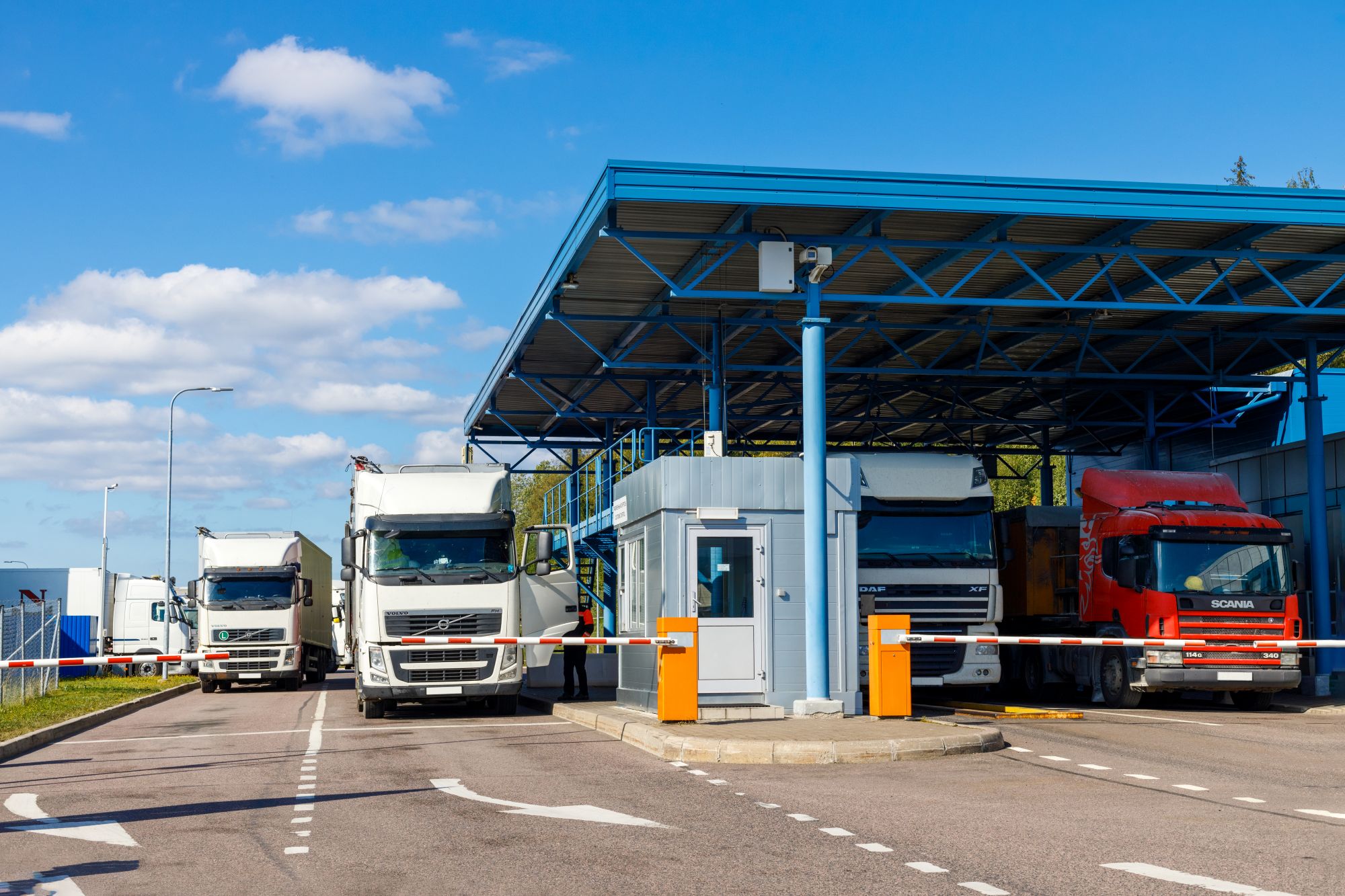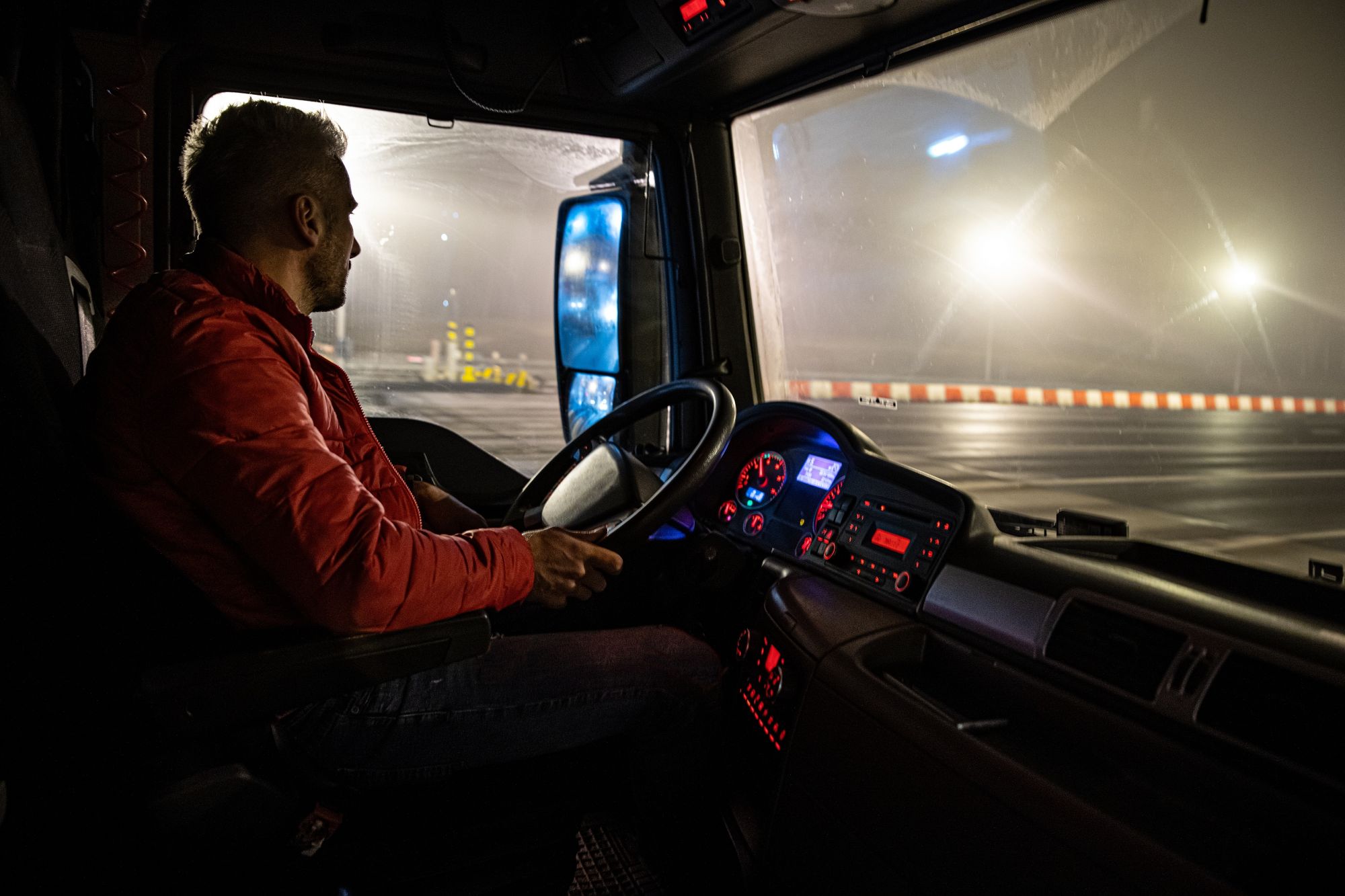
Guest
Reapertura de la frontera entre Polonia y Ucrania: Lo que deben saber los operadores de flotas
Creado: 18/06/2025
•
Actualizado: 20/06/2025
Tras meses de interrupciones, el tráfico de mercancías entre Polonia y Ucrania vuelve a circular libremente. Pero con las tensiones aún latentes y la amenaza de nuevos bloqueos en la mente de todos, los operadores de flotas deben permanecer alerta ante los riesgos y preparados para proteger el bienestar de los conductores a ambos lados de la frontera.
Este artículo explica las causas de la interrupción, cómo afectó a los conductores y las medidas que puede tomar para reducir el impacto si vuelve la huelga.
¿Qué causó el bloqueo fronterizo Polonia-Ucrania de 2024?
La situación comenzó a finales de 2023, cuando los camioneros polacos empezaron a protestar en los principales pasos fronterizos. Alegaban que la decisión de la UE de no exigir permisos a los transportistas ucranianos, introducida como medida temporal en tiempos de guerra, había provocado una afluencia de operadores de bajo coste que subcotizaban a las empresas polacas.
Las protestas se intensificaron, bloqueando las principales rutas de transporte de mercancías hacia Ucrania y atrapando a miles de vehículos en colas kilométricas. En su punto álgido, el bloqueo dejó más de 5.000 camiones varados en la frontera, algunos esperando más de una semana para cruzar. Los conductores comunitarios no ucranianos también sufrieron largos retrasos, horarios apretados y malas condiciones.
Lo que empezó como una disputa logística se convirtió en una protesta más amplia de los camioneros polacos por las importaciones ucranianas, el acceso al mercado y el impacto de las medidas de emergencia de la UE en el transporte. Pronto se sumaron los agricultores polacos, frustrados por el efecto de los productos agrícolas ucranianos en los precios nacionales.
Los conductores polacos también criticaron el sistema electrónico de colas de Ucrania para los pasos fronterizos -conocido como eCherha-, alegando que ponía en desventaja a los transportistas de la UE. Aunque el sistema se diseñó para agilizar el movimiento de mercancías permitiendo a los transportistas reservar con antelación las franjas horarias de cruce, los operadores polacos afirmaron que daba a las empresas ucranianas mayor flexibilidad y un acceso más rápido. Cuestiones como las barreras lingüísticas, la escasa integración con los sistemas logísticos de la UE y una aplicación incoherente hicieron que muchos conductores de la UE tuvieran que esperar más tiempo en la frontera, lo que alimentó aún más la percepción de trato injusto y contribuyó al malestar general.
Cronología de los bloqueos fronterizos entre Polonia y Ucrania
Noviembre de 2023: Comienzan las protestas en los pasos fronterizos de Dorohusk, Hrebenne y Korczowa.
Diciembre de 2023: Se bloquean más cruces, incluido el de Medyka; tres conductores ucranianos mueren esperando en las colas.
Enero de 2024: El gobierno polaco llega a un acuerdo para pausar el bloqueo hasta marzo.
Marzo-abril de 2024: Se reanudan los bloqueos esporádicos en los cruces más pequeños.
Mayo de 2025: Se inicia un nuevo bloqueo de cuatro meses en Yahodyn-Dorohusk, pero es anulado en los tribunales.
Junio de 2025: Todos los principales pasos fronterizos permanecen abiertos, pero persiste el riesgo de futuras perturbaciones.
¿Qué está haciendo el Gobierno polaco para mejorar la situación?
En respuesta a la interrupción y sus implicaciones más amplias, el gobierno polaco ha adoptado una postura proactiva. Los pasos fronterizos con Ucrania han sido designados infraestructuras críticas, lo que les confiere una mayor protección frente a futuros bloqueos y contribuye a garantizar la continuidad del flujo de mercancías, ayuda humanitaria y apoyo militar.
También se ha creado un nuevo Consejo de Cooperación con Ucrania para reforzar en general los lazos entre ambos países. Parte de su cometido es mejorar la coordinación del comercio y el transporte. Paralelamente, Polonia está invirtiendo en infraestructuras fronterizas orientales y colaborando con funcionarios de la UE para presionar en favor de unas condiciones más justas para los transportistas polacos. Aunque estas medidas no resuelvan la situación de la noche a la mañana, indican un compromiso a largo plazo con la estabilidad y el diálogo estructurado.

El impacto en los conductores
El bloqueo creó unas condiciones inaceptables para los conductores profesionales. Muchos pasaron días o semanas en sus taxis sin acceso a aseos, comida o agua corriente. Algunos quedaron atrapados a temperaturas bajo cero, sin calefacción ni refugio.
Tres conductores ucranianos murieron durante el bloqueo, y se cree que el agotamiento y las enfermedades no tratadas contribuyeron a ello.
Las perturbaciones también causaron una importante tensión mental y emocional, sobre todo a los conductores ucranianos que intentaban llegar a sus hogares o regresar de ellos en tiempos de guerra. Los retrasos no sólo afectaron al comercio, sino también al transporte de combustible, ayuda y material militar, esenciales para la defensa nacional de Ucrania.
Aunque los manifestantes polacos insistieron en que se permitía el paso de vehículos de ayuda humanitaria y militar a través de la frontera, los informes de las autoridades ucranianas indican que no siempre fue así.
Estas condiciones no sólo fueron traumáticas para los conductores, sino que también pusieron de manifiesto las lagunas en la gestión de riesgos de las flotas y la planificación de emergencias. Ahora, los operadores deben considerar las perturbaciones fronterizas como una amenaza permanente.
Lo que los transportistas deben saber
Aunque la situación se ha estabilizado, las tensiones subyacentes entre los transportistas polacos, los operadores ucranianos y la política de la UE siguen sin resolverse. Los gestores de flotas que operan en la región o cerca de ella deben estar alerta ante la posibilidad de que se produzcan nuevas huelgas, especialmente durante los momentos de presión estacional o las revisiones de la política de la UE.
He aquí las recomendaciones del equipo SNAP para gestionar la situación con eficacia:
1. Supervisar la situación en la frontera polaco-ucraniana
Manténgase al día con las noticias de las asociaciones logísticas polacas y ucranianas y de fuentes gubernamentales. Suscríbase a las alertas de tráfico fronterizo y siga a socios logísticos de confianza para obtener actualizaciones en tiempo real.
2. Planificar rutas flexibles
Disponga de planes de contingencia que redirijan los vehículos a través de Hungría, Eslovaquia o Rumanía si los pasos entre Polonia y Ucrania vuelven a bloquearse.
3. Apoye el bienestar de los conductores
Asegúrese de que sus camiones están abastecidos con lo esencial: comida, agua, bancos de energía y botiquines médicos.
Durante los periodos de agitación, el acceso a aparcamientos seguros para camiones en Polonia es esencial, para que sus conductores estén seguros, descansen y se alejen de la carretera. Proporcione a los conductores información actualizada sobre aparcamientos seguros para camiones y áreas de descanso a lo largo de su ruta.
Nuestra aplicación intruck tiene un mapa interactivo de aparcamientos para camiones, con 11.000 proveedores de servicios para vehículos pesados en toda Europa, incluidos Polonia, Hungría y Eslovaquia. Es una herramienta fácil de usar para encontrar áreas de descanso seguras para camiones en Polonia, lo que la hace especialmente valiosa durante los periodos de huelga.
Aunque la aplicación no ofrece actualmente la posibilidad de reservar aparcamiento para camiones en Ucrania, los operadores y conductores ucranianos pueden utilizar intruck para localizar paradas de descanso fiables dentro de la UE durante viajes de larga distancia o momentos de interrupción.
4. Reserve soluciones de aparcamiento seguro para camiones en Polonia
Con el aumento de la demanda durante los periodos de interrupción, es fundamental reservar con antelación. Los conductores también pueden utilizar intruck para encontrar y reservar con antelación aparcamientos de confianza para camiones en Polonia. Tanto si sus vehículos se adentran en Europa del Este como si regresan hacia el oeste, permite a sus conductores acceder a aparcamientos para camiones cerca de Varsovia y otras zonas de mucho tráfico.
5. Comunicarse regularmente con los conductores
Establezca horarios de facturación, especialmente si se prevén largas esperas o desvíos. Asegure a los conductores que su bienestar es una prioridad y proporcióneles apoyo si se enfrentan a retrasos inesperados. Si es posible, sugiera con antelación aparcamientos seguros para camiones en Ucrania, para que sepan dónde descansar.
De cara al futuro
La reapertura de la frontera entre Polonia y Ucrania es una buena noticia para las flotas que operan en Europa del Este. Pero con las tensiones políticas sin resolver, es esencial estar preparados.
"La situación está cambiando rápidamente", afirma Nick Renton, Director de Estrategia Europea y Desarrollo Empresarial de SNAP. "Ante la posibilidad de nuevos trastornos en la frontera entre Polonia y Ucrania, recomendamos a los operadores de flotas que pongan en marcha planes sólidos para dar prioridad al bienestar de los conductores y minimizar los riesgos operativos. Esto incluye flexibilizar los horarios de entrega, proporcionar suministros esenciales en los vehículos y garantizar que los conductores tengan acceso a un aparcamiento seguro para los camiones".
"Nuestra red de paradas de camiones reservables en toda Europa y Polonia le da las herramientas para mantenerse ágil, ofreciendo tranquilidad tanto a los operadores como a los conductores cuando las condiciones sobre el terreno se vuelven impredecibles."
Vea nuestro mapa interactivo de aparcamientos seguros para camiones en Polonia hoy.



